"Tungus uprising". Anti-Soviet Insurgency in the Okhotsk Territory
Reasons for the uprising
For several years, insurgent groups operating in Eastern Siberia have provided armed resistance to the Soviet authorities. The causes of the uprisings that flared up in Eastern Siberia, most often were not associated with the ideological confrontation of the communist government. As a rule, the role was played by the discontent of the population with the policy of the Soviet government in the sphere of economic relations and, in particular, the abuse of official position, which was characteristic of many heads and "chiefs" of the local level. Although, of course, there were also attempts to give protest movements a deeper ideological background. As for the social base of the movement, in the first years of Soviet power the traditional social structure of many peoples of Eastern Siberia, which maintained a tribal structure and, accordingly, could be consolidated to resist the new regional authorities, was not yet disrupted.
Mid 1920's marked by a major uprising of the indigenous population of the Okhotsk coast and the south-eastern regions of Yakutia. The vast region of Yakutia, which included the Aldan, Verkhoyansk, Vilyuisk, Kolyma, Olekminsky and Yakutsk districts, was inhabited by the Tungus. It should be noted that traditionally, Evenks, Evens, and part of the Yakuts, who lived in close contact with the Evenks, were called Tungus in Tsarist Russia and in the early years of Soviet power. The number of Tungus population in this region reached 13 thousand people. At the same time, in the period under review, the Tunguses, for the most part, maintained the traditional way of life and their characteristic social structure. However, according to a number of researchers, in reality, the Tunguska population of the region under consideration was rather Yakut. Those Evenki who lived in the region, were largely Yakutized and used the Yakut language.
The discontent of the indigenous population of the region caused the separation of the Okhotsk region from Yakutia, which followed in April 1922. As a matter of fact, the Okhotsk Territory was assigned to the Kamchatka Region as far back as 1910-1911, but up to 1922 there were no real boundaries between Yakutia and the Okhotsk Territory. The Tunguses quietly wandered on the territory of both the Okhotsk region and Yakutia. At the same time, schools and churches submitted to Yakutsk, from Yakutia (Lensky Krai), the Cossacks arrived to the Okhotsk region, carrying the service of law enforcement. The situation changed in 1922, after the actual separation from Yakutia. This led to an increase in tension associated with the authorities' disregard for the local population. If in Yakutia the transition to autonomy was gradually carried out, as a result, the development of a nationally oriented education and culture system began, and the Soviet leadership behaved more restrained, the small Tungus population of the Okhotsk region became, in a literal sense, a victim of arbitrariness.
Firstly, unlike Yakutia, in the Okhotsk region there were no national educational institutions, the language was not studied, and the appointed Soviet leaders did not speak it, and most of the Tunguses did not know Russian or spoke it with difficulty. In turn, the Tungus were isolated from participation in the activities of government bodies and administration: as noted by the historian Ye.P. Antonov, not a single Tungus was involved in the service in law enforcement agencies, in government bodies (Antonov EP. Tunguska National Uprising 1924-1925. // Russia and the ATP. 2007, No. 4. C. 42). The new Soviet chiefs inherited the worst traditions of the Russian pre-revolutionary government in the region in terms of impunity for abuses and committing crimes against local residents. Thus, local authorities were engaged in blatant robbery of the indigenous population, selecting deer, dogs and levying huge taxes.
The confiscation of deer actually ruined the once flourishing Tungus genera, who roamed the territory of the Okhotsk region. Many Evenks have lost their livelihoods - from livestock to 40-70-100, or even a thousand deer, people have left for 10-20 deer. The deterioration of material prosperity was accompanied by constant harassment and harassment by the authorities, which, as even the Soviet authorities that had investigated the situation in the Okhotsk region later recognized, were busy with criminal elements. Among them were not only the mercenaries and bribe takers, but also outright bandits, who before the revolution were engaged in the fraudulent acquisition of furs from the local population. Among the workers of the local Soviet authorities were even members of the White Guerrilla movement, subsequently rehabilitated and entered the Soviet service. It is indicative that not all of the representatives of the local Soviet authorities participated in the robbery of the local population - some tried to protest, but also themselves risked becoming victims of lawlessness. Therefore, when indignation among the indigenous population heated the situation to the extreme point, a social explosion occurred. The uprising against the local authorities began.
The beginning of the uprising. Mikhail Artemyev
10 May 1924, a detachment of 25-30 rebels captured the village of Nelkan. On the night of 6 on June 1924, a detachment of 60 rebels managed to defeat the Soviet garrison of the port of Ayan and capture the town and the port. It is indicative that the Tungus did not show any bloodthirst towards Soviet managers - for example, the Soviet employees captured in Nelkan were released, and the rebels released the garrison of the port of Ayan and also released into Yakutia, having previously disarmed it. The rebels did not kill any of the Soviet servants.
In the same June, 1924, the originally spontaneous insurgent movement, began to take on more organized forms. A congress of the Ajano-Nelkan, Okhotsk-Ayan and Maymakan Tunguses was convened in the rebel-held Nelkan, at which its delegates elected the Provisional Central Tungus National Administration. K. Struchkov was elected Chairman of the Board, -N.M. Dyachkovsky, members of the management -T.I. Ivanov and E.A. Karamzin. As for the military leadership of the insurgents, it was carried out by P.V. Karamzin and M.K. Artemyev. Pavel Karamzin was a representative of the Tungus princely family extremely influential in the local territories, therefore it was a kind of symbol of the uprising - the Tungus still had very strong traditional components in their social life, therefore the presence of people from the princely family headed by rebels automatically drew on the side of the latter broad masses of Tungus population. However, in many respects, rather, Mikhail Artemyev should be considered one of the most active initiators of the uprising - he commanded the detachment that took Nelkan and the port of Ayan, and also participated in the direct development of the program bases of the insurgent movement. Among other local residents, Artemyev was distinguished by literacy and the presence of life experience that is not typical for reindeer herders.
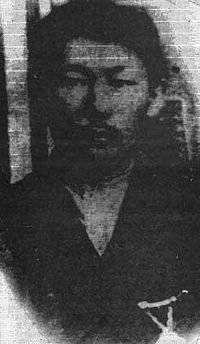 Mikhail Konstantinovich Artemyev was born in 1888 in the Betyunsky nasleg of the Boturussky ulus in a peasant family. Unlike many other "foreigners", as local residents were called in tsarist times, Artemyev was lucky - he was able to get an education after graduating from four classes of the Yakutsk Real School. Literacy allowed Michael to take the post of clerk in the Bethune nasleg, and then become a foreman of the Uranai and Bethune tribal administrations. Artemiev managed to work as a teacher in Amga settlement. Like many educated representatives of the national minorities of Siberia, Artemyev initially supported the establishment of Soviet power. 17 March 1920. He took the post of county commissioner, was also the chairman of the Revolutionary Committee. However, rather quickly Artemyev from an active supporter of the Soviet government turned into a member of the rebel movements. He fought against the Bolsheviks in the Korobeinikov insurgent detachments, then served with General Pepeliaev. The defeat of the Pepelyayevites made Artemyev flee to the taiga, where, being in an illegal position, he led the rebel detachment.
Mikhail Konstantinovich Artemyev was born in 1888 in the Betyunsky nasleg of the Boturussky ulus in a peasant family. Unlike many other "foreigners", as local residents were called in tsarist times, Artemyev was lucky - he was able to get an education after graduating from four classes of the Yakutsk Real School. Literacy allowed Michael to take the post of clerk in the Bethune nasleg, and then become a foreman of the Uranai and Bethune tribal administrations. Artemiev managed to work as a teacher in Amga settlement. Like many educated representatives of the national minorities of Siberia, Artemyev initially supported the establishment of Soviet power. 17 March 1920. He took the post of county commissioner, was also the chairman of the Revolutionary Committee. However, rather quickly Artemyev from an active supporter of the Soviet government turned into a member of the rebel movements. He fought against the Bolsheviks in the Korobeinikov insurgent detachments, then served with General Pepeliaev. The defeat of the Pepelyayevites made Artemyev flee to the taiga, where, being in an illegal position, he led the rebel detachment. The 600 Evenks and Yakuts took part in the Tunguska Uprising, and there were also a few representatives of the Russian population of the region. From the very beginning of the movement, it assumed the character of a political, since it put forward quite clear political demands - the creation of a national public entity. In the economic field, the participants in the uprising demanded the restoration of the Yakutsk-Okhotsk, Nelkan-Ayan and Nelkan-Ust-May tracts, which indicated their desire to improve the financial situation of the Okhotsk region and revive its trade and economic ties with Yakutia. At the same time, these requirements would also be beneficial for the economic development of Yakutia, since, provided these paths were recreated, Yakutia would have the opportunity of maritime trade from the Okhotsk coast. The seriousness of the insurgents' intentions was confirmed by the adoption of their own tricolor flag, on which a white stripe signified Siberian snow, green - taiga forests, and black - native land.
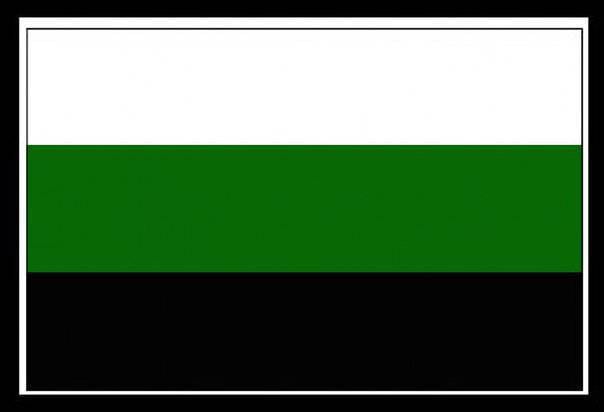
Thus, the ideology of the insurgency rather satisfied the interests of the Yakut population, since the rebels sought to transform Yakutia into a region with access to the sea through the Okhotsk Territory. In the event that the Soviet government went on meeting the demands of the insurgents about uniting Yakutia and the Okhotsk region, a new union republic would have actually been formed, which would have repeatedly strengthened its positions. Naturally, the plans of the central government of the country did not include such national education, which covered a significant part of Eastern Siberia, as the danger of separatist tendencies was obvious. Especially in that difficult period when lobbyists of Japanese interests were active in the Far East and Eastern Siberia.
The fighting and surrender of the rebels
After the movement declared its political positions, the Soviet authorities of Yakutia were very concerned about the events. The rebel movement was characterized as a manifestation of banditry and criminality; at the same time, the rebels were accused of collaborating with Japanese special services interested in destabilizing the situation in Eastern Siberia and the Far East. The Yakut district executive committee issued an appeal “To all working Yakuts, Tungus. To the national intelligentsia ”, which stated the criminal nature of the insurgency in the Okhotsk region. In September, the head of the OGPU of the Okhotsk district of Kuntsevich sent a detachment of the OGPU from 1924 to the village of Ulya under the command of V.A. Abramov. "Abramovtsy" shot three Russian fishermen, three Tungus and one Yakut.
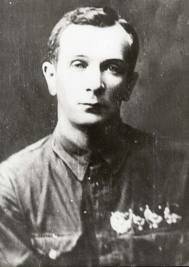 The conflict entered the most active phase at the beginning of 1925. In early February, a cavalry detachment under the command of the famous Strode was sent against the rebels. Thirty-year-old Ivan Yakovlevich Strod (1894-1937) was considered one of the Red Army commanders most experienced in the Far East and Eastern Siberia. In the past, an anarchist, and then a supporter of the Soviet government, Strod replaced the deadly legendary Nestor Kalandarishvili as commander of a cavalry unit. Although Strod received his combat experience before the start of the Civil War, he participated in the First World War, was awarded the Cross of St. George and was given the rank of ensign. During the first half of the 1920's. Strod commanded the Kalandarishvili cavalry detachment, led the rout of the White Partisan formations of Pepeliaev, Donskoy, Pavlov. It was assumed that an experienced commander, who knew the tactics of the partisans and smashed the white squads of professional soldiers, would easily cope with the Evenk rebels. Indeed, 7 February 1925, the Strod squad occupied Petropavlovsk. On the bank of the Aldan, the Evenks, commanded by I. Kanin, had collided with Strode's cavalrymen. The rebels retreated to Nelkan.
The conflict entered the most active phase at the beginning of 1925. In early February, a cavalry detachment under the command of the famous Strode was sent against the rebels. Thirty-year-old Ivan Yakovlevich Strod (1894-1937) was considered one of the Red Army commanders most experienced in the Far East and Eastern Siberia. In the past, an anarchist, and then a supporter of the Soviet government, Strod replaced the deadly legendary Nestor Kalandarishvili as commander of a cavalry unit. Although Strod received his combat experience before the start of the Civil War, he participated in the First World War, was awarded the Cross of St. George and was given the rank of ensign. During the first half of the 1920's. Strod commanded the Kalandarishvili cavalry detachment, led the rout of the White Partisan formations of Pepeliaev, Donskoy, Pavlov. It was assumed that an experienced commander, who knew the tactics of the partisans and smashed the white squads of professional soldiers, would easily cope with the Evenk rebels. Indeed, 7 February 1925, the Strod squad occupied Petropavlovsk. On the bank of the Aldan, the Evenks, commanded by I. Kanin, had collided with Strode's cavalrymen. The rebels retreated to Nelkan. However, on the night of 21 on 22 in February, 1925 was a detachment of 150 Evenks under the command of P.V. Karamzin managed to seize the New Ustye. Although the Evenks were opposed by the Red Army garrison of 317 fighters and commanders, armed with seven machine guns, the rebels managed to take over and capture the town. After that, the rebels seized goods stored in warehouses, with a total value of 100 thousand rubles in the New Ustye, and in 25 thousand rubles - in Oymyakon. Naturally, the rebels appropriated the furs stored in the warehouses of Soviet organizations. In relation to the local population, however, many rebels behaved no better than the Soviet leaders, against whom they raised a rebellion. Thus, the insurgent soldiers seized food from the civilian population, took the horses.
Continuing raids on the Okhotsk Territory, 4 March 1925. The rebels invaded Ust-Mayskoye. The Red Army soldiers from 50 did not manage to knock them out of the village, after which the Red Army soldiers were forced to retreat, losing nine soldiers killed and eight wounded. But the repeated operation of the Red Army detachment, this time from the 80 fighters and commanders, turned out to be more successful - the rebels retreated from Ust-Maya. In early April, the Red Army soldiers Ivan Strod managed to surround a detachment of the rebel S. Kanin from 13 people. Only three rebels managed to escape, two were killed, and the remaining eight, including Kanin, who was in command of the detachment, were captured.
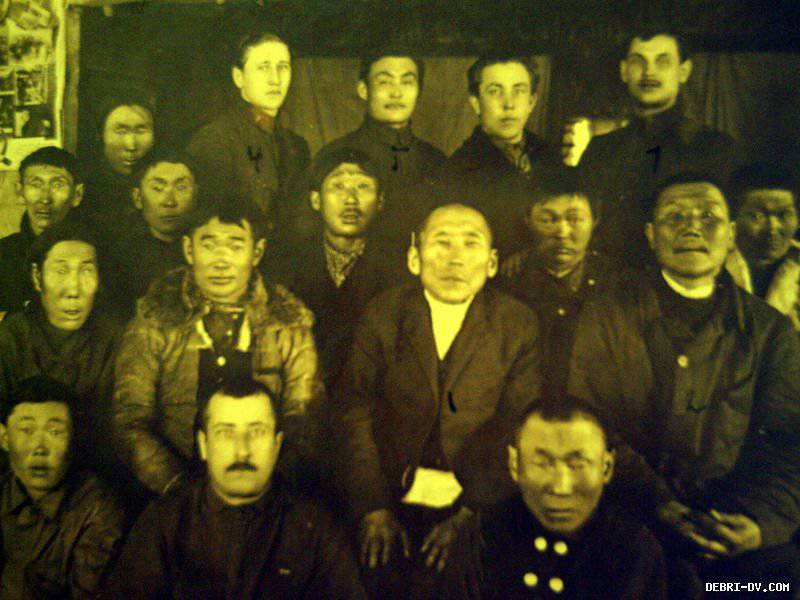
The rebel detachment, in the center - Pavel Karamzin
Meanwhile, seeing that the use of force to suppress the insurgency in the Okhotsk region entails only further embitternment of the indigenous population and does not contribute to a radical solution of the problem, the governing bodies of the Soviet government decided to change the policy in the direction of reaching a compromise. Ivan Strode played a significant role in resolving the conflict situation. Over the long years of his life and service in the taiga of Eastern Siberia and the Far East, he has well studied the psychology and customs of the local population.
Mikhail Artemyev, who lodged in Myryla with his rebels, met with the delegation of the Central Election Commission of Yakutia under the leadership of R.F. Kulakovsky. An armistice agreement was signed, and on April X, a delegation of the Yakutsk Central Election Commission arrived at Artemyev, which included E.I. Sleptsov, F.G. Sivtsev and N. Boldushev. They promised Artemyev that the issue of reunification of the region with Yakutia would be resolved soon. The consequence of the negotiations was the addition weapons detachment M.K. Artemyev 9 May 1925. Two months later, on July 18, a detachment of another reputable commander P.V. Karamzin. Thus, the Evenk and Yakut rebels laid down their 519 weapons. Since the central Soviet leadership at this time very cautiously approached issues in the field of interethnic relations, local authorities also relied on soft methods in relation to the rebels.
Dalrevkom 10 August 1925, organized a congress of the Tungus coast of Okhotsk in Okhotsk, which was attended by delegates 21 Tungus family and three Yakut districts. 23 August 1925, in Nelkan, a congress of the Main Tungus National Office was held, at which representatives of the Soviet government F.G. Sivtsev, TS Ivanov and the Chairman of the Special Commission of the All-Russian Central Executive Committee K.K. Baikal. As a result of the reports of the Soviet leaders, the Tunguska Directorate announced the resignation and disbanding. The importance of resolving a conflict situation peacefully was emphasized. However, K.K. Baikalov, who led the Special Commission of the All-Russian Central Executive Committee, as a result of investigating the causes of the 1924-1925 uprising, concluded that the uprising was provoked by the criminal activities of the authorities of the Okhotsk region and the staff of the local OGPU.
At the same time, the chairman of the Special Commission of the All-Russian Central Executive Committee refuted the accusations of rebel cooperation with Japanese and American agents who had previously been distributed by the Yakut Soviet press.
The representative of the Okhotsk-Yakut military expedition of the OGPU Andreev made the following conclusion about the real reasons for the uprising that occurred: “The main reason for the Tunguses' discontent with the existing power is their terrible impoverishment. The death of deer due to the hoof, the invasion of wolves, the pestilence on dogs, the lack of credits from economic organizations, the disease and the high mortality of the Tungus due to the complete lack of medical care, the inability to acquire basic necessities - these reasons together ruined the already low-cost primitive tungus economy. The mistake of the local authorities consists in the following: there was no connection with the native population, they were not co-workers, but were officials, according to the official status of their duties, all circular orders of the center, written for the majority of provinces of Soviet Russia, but unsuitable for the Okhotsk region , they were blindly carried out in life ”(quoted in: Fonova TV, Administrative and Territorial Definition of Nelkan in 20 and 30 in the Last Century. Report of the 2 Scientific and Practical Conference“ Meet the Sun! ”. 2 August XN UMX g.).
Participants in the Tunguska Uprising were amnestied by the Soviet authorities. Moreover, many rebels were given loans to start a household. This step of the Soviet power was explained by the fact that people who were really impoverished took part in the uprising and were difficult to blame for the kulaks or bourgeois sentiments. Therefore, the Soviet leadership tried to hush up the conflict and help those Evenks and Yakuts who were in distress financially. Some of the leaders of the uprising were even taken to serve in the Soviet administrative institutions. In particular, Mikhail Artemyev - the most prominent field commander of the Tungus uprising - even worked as a secretary of the Nelkan volost, then was a translator and conductor.
"Confederate". Second uprising
However, in the future, many former participants in the uprising were again dissatisfied with the policy of the Soviet government. Despite the fact that the Soviet leadership made promises to satisfy the interests of the indigenous population, in reality the situation has changed little. Most likely, this is exactly what made Mikhail Artemyev in 1927 join the next uprising that occurred in Soviet Yakutia and entered history Eastern Siberia as “xenophontovschina”, or “the movement of confederalists.” The Tunguses also took part in the “confederalist movement”, although it was mostly focused on the Yakuts in terms of composition and goals of the movement. The essence of the movement of confederalists was to strive to transform the Yakut ASSR into a union republic, which meant increasing the representation of the Yakuts in the Council of Nationalities of the USSR, the authorities in Yakutia, as well as increasing self-government in the republic. In addition, there was nationalist overtones - confederalists opposed the settlement of Yakutia by settlers from the European part of Russia, because they saw in them a threat to the economic well-being of the Yakut population. The peasants who occupied the agricultural land, thus deprived the Yakuts pasture.
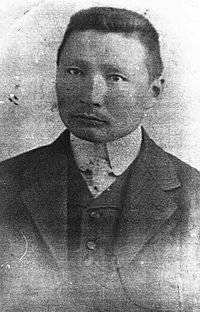 At the root of the confederal movement in Yakutia in the 1925-1927. stood Pavel V. Ksenofontov (1890-1928). Unlike Artemyev, although literate, but with only four classes of a real school behind him, Ksenofontov could be called a real representative of the Siberian intelligentsia. Coming from a noble Yakut family, Ksenofontov graduated from the law faculty of Moscow University and in 1925-1927. worked in the People's Commissariat of Finance of the Yakut ASSR. When armed uprisings of the local population began in April 1927 in Yakutia, the Mladako-Yakut National Soviet Socialist Confederation Party was created by Xenofontov. In fact, it was her views that determined the main line of the Yakut 1927 uprising of the year. In addition to Ksenofontov, Mikhail Artemyev also stood at the head of the rebels.
At the root of the confederal movement in Yakutia in the 1925-1927. stood Pavel V. Ksenofontov (1890-1928). Unlike Artemyev, although literate, but with only four classes of a real school behind him, Ksenofontov could be called a real representative of the Siberian intelligentsia. Coming from a noble Yakut family, Ksenofontov graduated from the law faculty of Moscow University and in 1925-1927. worked in the People's Commissariat of Finance of the Yakut ASSR. When armed uprisings of the local population began in April 1927 in Yakutia, the Mladako-Yakut National Soviet Socialist Confederation Party was created by Xenofontov. In fact, it was her views that determined the main line of the Yakut 1927 uprising of the year. In addition to Ksenofontov, Mikhail Artemyev also stood at the head of the rebels. Initially, the confederalists planned to speak on September 15, but the plans were thwarted by the onset of counterintelligence operations — the upcoming insurrection was announced to the Soviet leadership by P.D. Yakovlev, who served as deputy people's commissar of the internal trade of Yakutia. However, on September 16, a rebel detachment was formed, headed by Xenophontov, Mikhailov and Omorusov. In October 1927, the rebels under the command of Artemyev occupied Petropavlovsk, including in their squad a squad of 18 local tunguses. Olmarukov's detachment occupied the village of Pokrovsk.
The detachments of Ksenofontov and Artemyev occupied the villages of Ust-May, Petropavlovsk, Nelkan, Oymyakon and a number of others. In two months, the uprising covered the territory of five Yakut uluses, and the number of rebels increased to 750 people. In this case, the occupation of settlements was carried out virtually without real clashes with the Red Army or the police. To counter the rebels in the beginning of October 1927, the Soviet leadership convened an emergency session of the Yakut CEC. It was decided to entrust the responsibility for the suppression of the uprising to the NGT expedition of the OGPU. On November 18, Mikhailov’s squad collided with the OGPU subunit.
In the village of Mytattsy 4 December 1927, the rebels elected the Central Committee of the Mladako-Yakut National Soviet Socialist Party of Confederalists and the general secretary of the party, who became Xenophonts. The party’s Central Committee included P. Omorusov, G. Afanasyev and six other rebels, I. Kirillov, M. Artemyev and A. Omorusova entered the party’s Central Control Commission. 16 December 1927. The rebels divided into several groups. A detachment of insurgents 40 under the command of Mikhailov moved into the East Kangalassky district, the detachment of Kirillov and Artemyev from seventy people - into the Duptsinsky district. As they advanced, the rebels gathered residents of the occupied villages and read out addresses to the people in the Yakut and Russian languages. In the footsteps of the rebels moved, in the meantime, detachments of the OGPU. The operation against the confederalists was commanded by that very Ivan Strod, who had suppressed the Tungus uprising two years earlier.
Surrender to confederalists
Like the Tungus uprising of 1924-1925, the confederalist movement in Yakutia was relatively peaceful. Only ten times during the whole uprising, there were exchanges of fire with the Soviet divisions, and no serious battles followed. The leadership of Soviet Yakutia tried to resolve the conflict peacefully and offered Ksenofontov an amnesty to him personally, to all the leaders and members of the movement in exchange for the addition of weapons. In the end, Xenophontov, convinced that the main task of the party is to declare existing problems and its point of view on their solution, January 1 1928 put down their arms. A number of his supporters preferred to “run” with a weapon for some time, however 6 in February 1928 surrendered to the last rebels. Although the uprising as a whole did not have a serious scope, and its leaders went for a voluntary surrender, the Soviet leadership violated the given pledges of amnesty.
Xenophon and other leaders of the uprising were arrested. The troika of the OGPU 27 in March 1928 issued a death sentence to Pavel Ksenofontov, and the next day, 28 in March 1928, he was shot. Mikhail Artemiev was shot by the sentence of the “troika” of 27 in March of 1928. The total number of people arrested in the Xenophon uprising case was 272, of whom 128 was shot, 130 was sentenced to various terms of imprisonment and the rest were released. At the same time, the purges also affected the leadership of the Yakut Autonomous Soviet Socialist Republic, which, in the opinion of the central authorities, could not bring full order to the territory of the republic. In particular, the chairman of the Central Election Commission of Yakutia, Maxim Ammosov, and the secretary of the Yakutsk regional committee of the party, Isidor Barakhov, were removed from their posts.
The confederation uprising is one of the most famous examples of organized resistance to Soviet power and its policies on the territory of Yakutia. But later, in the 1930-s, there were numerous appearances of the indigenous population of Eastern Siberia and the Far East against the Soviet government. Local residents were not satisfied with the results of collectivization, they were not satisfied with the policy of the Soviet government, aimed at eliminating traditional religious cults and the usual way of life. On the other hand, during the suppression of such speeches, the Soviet government acted more and more harshly, since the complicated situation in the country and in the world required increased attention to the interests of the national security of the state. Moreover, in close proximity to Soviet Siberia and the Far East, on the territory of Korea, Manchuria, Inner Mongolia, hostile Japan actively acted, seeking to establish hegemony throughout the Asia-Pacific region.
The article used the photo: Konstantin Pronyakin,
Khabarovsk Express, No. 42, 14.10.09 (http://debri-dv.ru.)
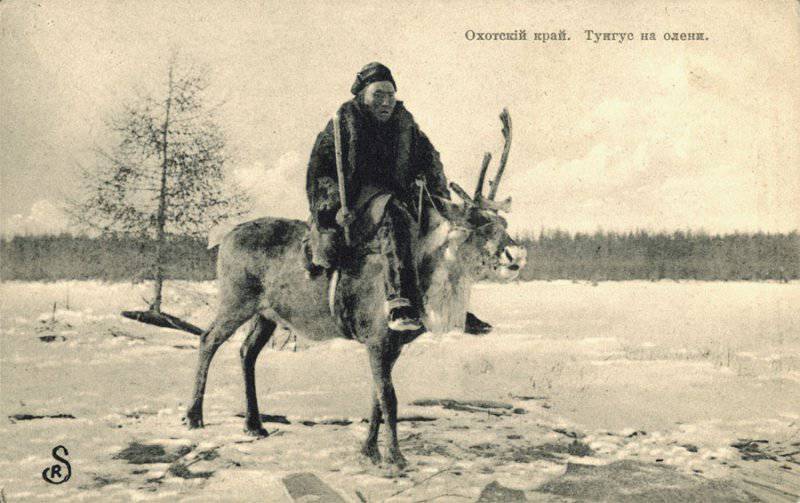
Information